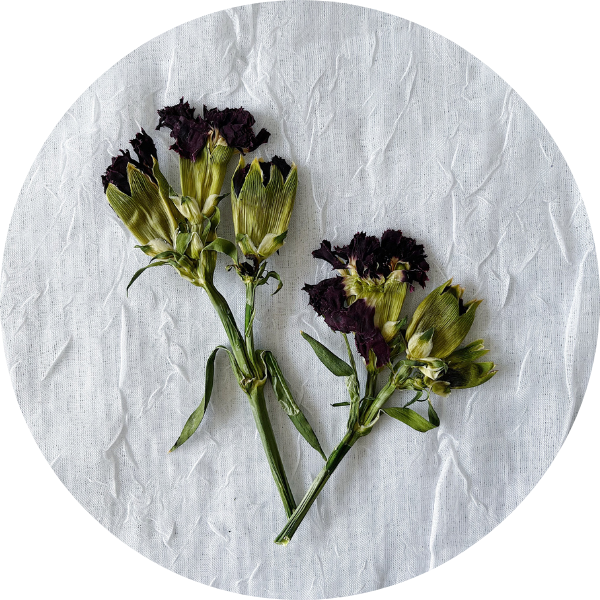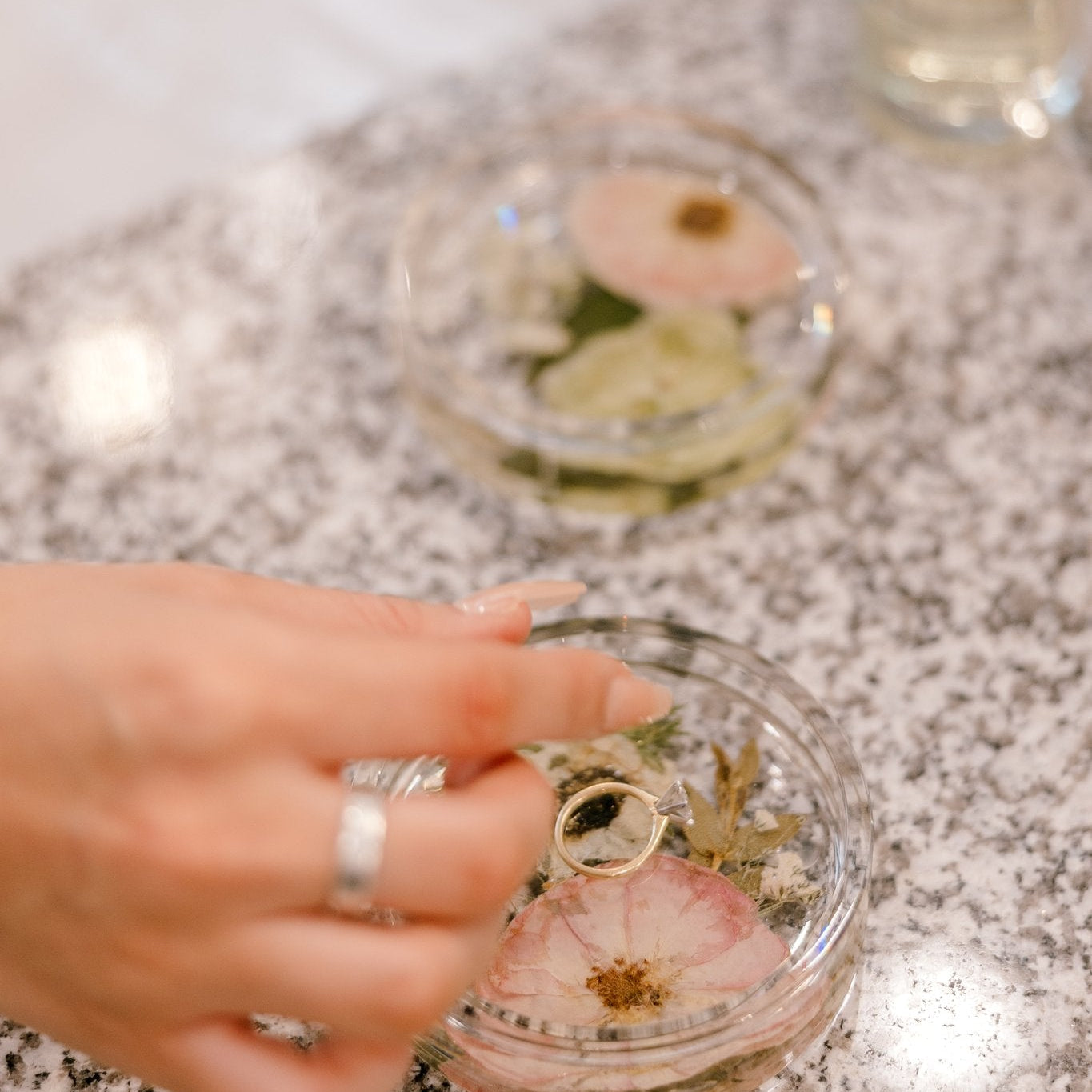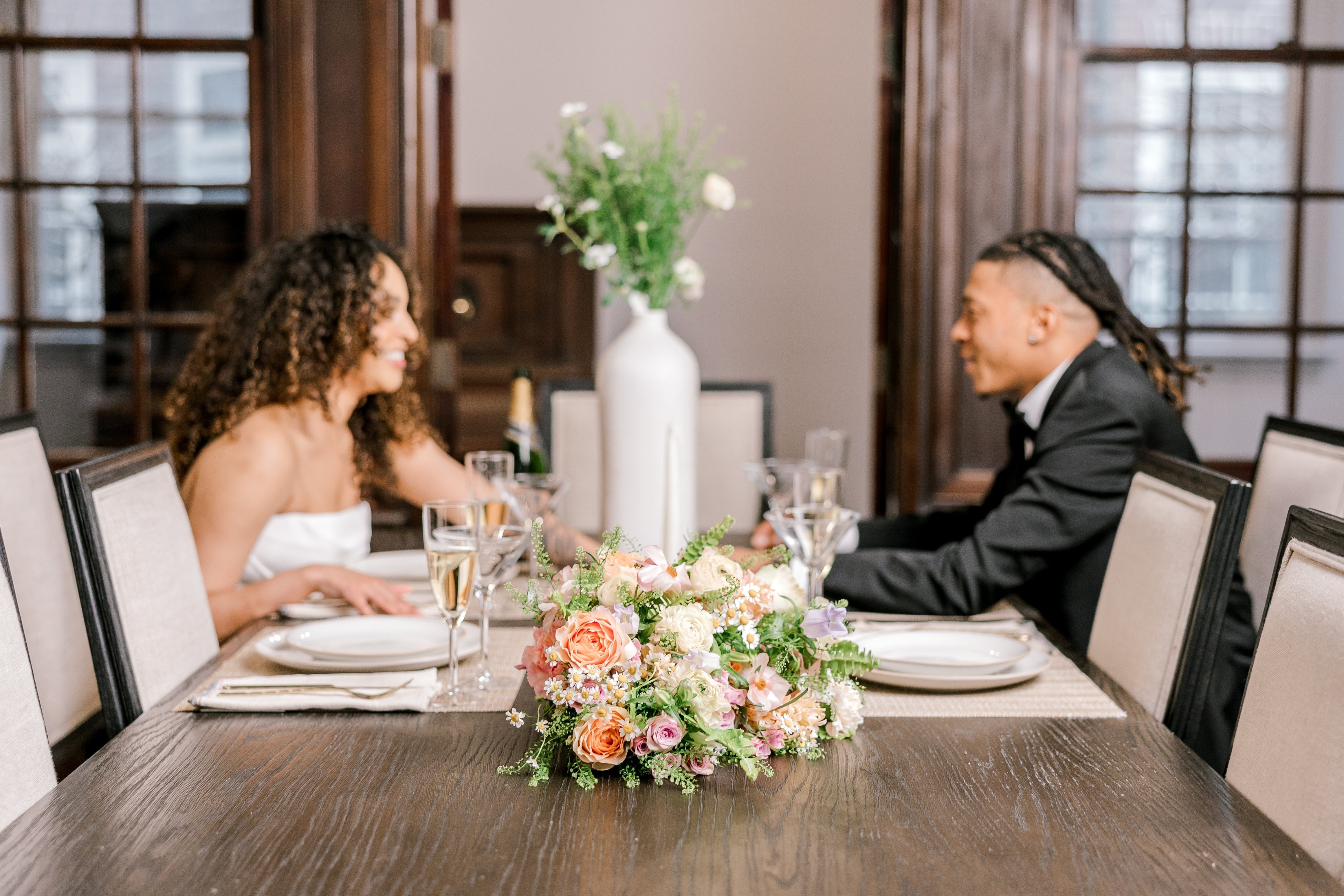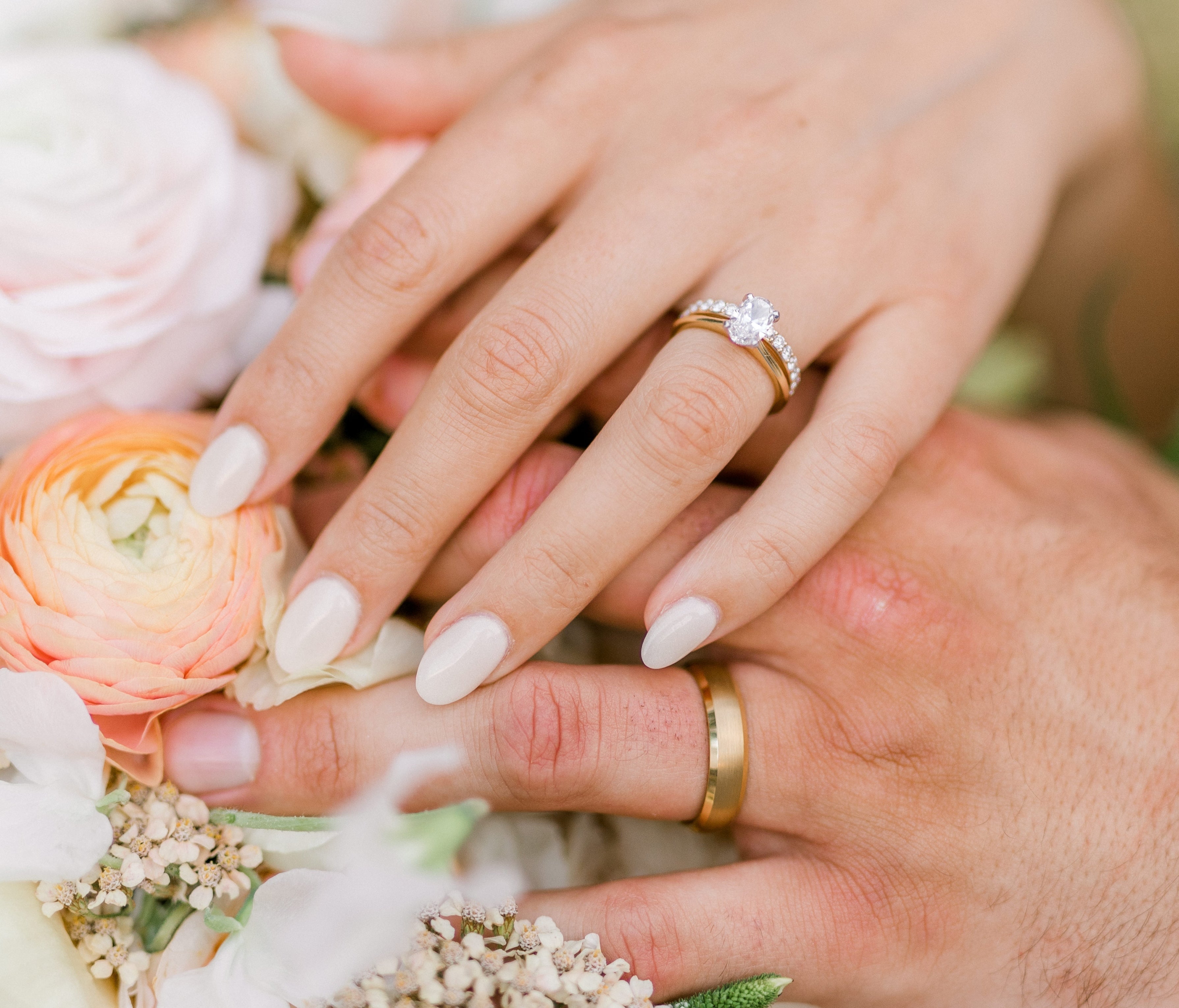Primary Florals

Anemone- When fresh, white anemones are delicately petaled with a navy center. After being pressed, the petals will retain their light look, becoming nearly transparent and perfect for our float frames and layering with your other flowers. A blue anemone has a great depth of color, which is not changed through pressing. The blue petals are opaque, adding a richness to any preserved floral bouquet.
Carnation- Fresh carnations are a burst of color coming from a green, conical stem. Most often pressed on their sides, you will see the layered green sepal, with the petals forming an arch of color above. We often leave the stems on our carnations, making them come alive all the more in the finished frame.
Gerbera Daisy- A gerbera daisy features slightly layered individual petals, with one pinwheel of longer petals and another, smaller one closer to the center of the flower (fun fact- each petal is its own flower and the daisy is comprised of hundreds of them, coming together as one). When pressed, the layers are still apparent, as well as the differentiation between shades and colors, though all of the colors will deepen.

Lily- A fresh lily is a beautiful display of stately, pointed petals opening to reveal the pollinating elements of the plant. A pressed lily is just as beautiful. Often patterned, the pressed petals will keep their colors well, while becoming somewhat transparent and delicate. White lilies will still appear white, with a slight antique hue.

Orchid- You will most commonly see fresh orchids tumbling gently over each other from a single stem system. Often white, they are also common in pink, purple, and yellow shades. An orchid’s shape and color will stay true to the fresh blooms, with some added transparency that adds to their delicate nature. The individual flowers are reattached to their stems, which have also been pressed, with care and precision by our talented designers to fully recreate their fresh beauty.

Peony- If you are wondering, "can you press peonies?" the answer is yes! Fresh peonies are a perfect centerpiece in any bridal bouquet, and remain so in a display. These flowers are large, textured, and can be beautifully colored. Whether white, pink, or burgundy, a pressed peony will keep its color, size, and texture, making it a favorite to incorporate in a preserved bouquet design.

Protea Varieties- Named for the Greek god, Proteus, who was a god of change and versatility, these blooms are likely to come in several varieties. The king protea is the most common, with hard, layered petals forming a shield around what is called the inflorescence, the mass collection of stems with feathery tips in the center. This unique flower is wonderful when pressed, maintaining the layers of the bloom’s outer shell, with the tops of the center peeking out. The conebush is another common protea form, with layered, woody petals coming from a thick stalk. These press well, keeping their color (commonly a green and purple gradient on each petal) and the shape of the petals. The pincushion protea is all inflorescence, with no outer petals. The small stems come up in fluorescent colors, with an orange to yellow gradient. These will also keep their shape and color after being pressed.

Ranunculus- A flower dense with overlaid petals when fresh, the ranunculus is able to flatten completely when pressed. Even a white bloom will show the many layers of petals, with a bright green center. A colored ranunculus is a favorite, with various shades helping the layers pop.

Standard Rose- Truly the most romantic of flowers, roses are incredibly popular inclusions for any bouquet. A fresh rose will look different from their pressed counterparts, but no less beautiful. To get the full effect of a rose’s color and texture, we most often press them so that they lay in a flat circle. We remove the central petals, which are tightly wound around each other and reveal the center of the rose, the outer petals stretching wide. While red, orange, purple, yellow and some pink roses retain their full color, some shades of pink will fade slightly, while white roses will develop an antique look that looks amazing in our natural wood frame, as it picks up on the subtle tones of the petals. A bridal favorite, the quicksand rose, will change more dramatically in color. The blush pink will sometimes remain at the tips of the petals, while rest is transformed into a lovely pink-lavender shade. Garden roses are slightly smaller roses that are a bit more subtle in color and delicate in texture. These are beautiful pressed, with the fine, delicate veins appearing on the faces of the petals.
Tulip- Tulips are one of spring’s most delightful fresh flowers, with striped, patterned petals in tones of pinks, whites, purples, yellows, and the rest of the rainbow. We most often press tulips to include their lovely green stems, which can add some whimsy to a design. The petals become delicate and transparent while keeping their color and patterns.
Secondary Flowers

Amaranthus- Growing in magenta tufts from a succulent, winding stem, amaranthus adds so much character to a bouquet, and to the finished frame! The densely packed flowers on the stem still manage to have a light, fluffy look even when completely flattened within the frame. The deep magenta color will remain pure.

Delphinium- Delphinium, also called larkspur, is a collection of small, fine flowers growing from a stem. Delphinium comes from the Greek for dolphin, because of the unique shape of the back of the blooms, which looks just like the nose of a friendly porpoise. We press each flower individually, as well as the stem, allowing our designers to recreate the shape of the plant as a whole, peeking up through the other flowers much like they do when the bouquet is fresh. The color, often a shade of blue, but can be white as well, does not change at all in the pressing process.

Hydrangea- Mostly seen in white, hydrangea will also come in shades of pink and blue. The puffed up ball of many small flowers easily becomes a flat sheet when pressed. The flowers are connected by a complex stem system that allows them to stay together when being pressed, while also having the details of individual, delicate blossoms present.

Lisianthus- A lisianthus blooms from its stem in a funnel shape, un-spiralling to reveal the yellow stamen and bright green center. This sweet flower comes in several colors, most commonly white and pink. This is another that will not lose its vivid colors during the pressing process. We also love seeing the buds of this flower used in a bouquet, as they press to a perfect flatness, and add a touch of color and detail when layered among the other blooms of a finished pressed bouquet frame.

Spray Rose- The large rose’s small counterpart is the perfect accent flower to any bouquet. When fresh, there are up to four or five roses growing from one larger stem, and we often press these on their sides and leave the stems. When laid amongst the other flowers, the stemmed spray roses will mimic how they looked when fresh. We also love seeing these pressed on their faces, which helps to add pops of color to a design. Like their larger cousins, these roses retain their color, with white petals changing slightly to an antique tone.

Stock- Another flower that is actually composed of many smaller flowers, fresh stock flowers have a light and fun feel to them. We most commonly see these in white, purple, and orange. The more colorful the blooms, the more likely you will see them keep their original look. White stock will take on the antiqued tone of other white blooms, which serves to add even more texture and detail when placed in a design.

Veronica- A favorite at Element Preservation is the veronica flower. With its playful shape, this flower makes for a fun bouquet and works itself well into a more whimsical look. White and blue veronica will both look amazing after pressing, with the deep green of the tips of the plant creating a wonderful contrast with the bright colors towards the bottom.
Graphics by: Jentle Land Mark








